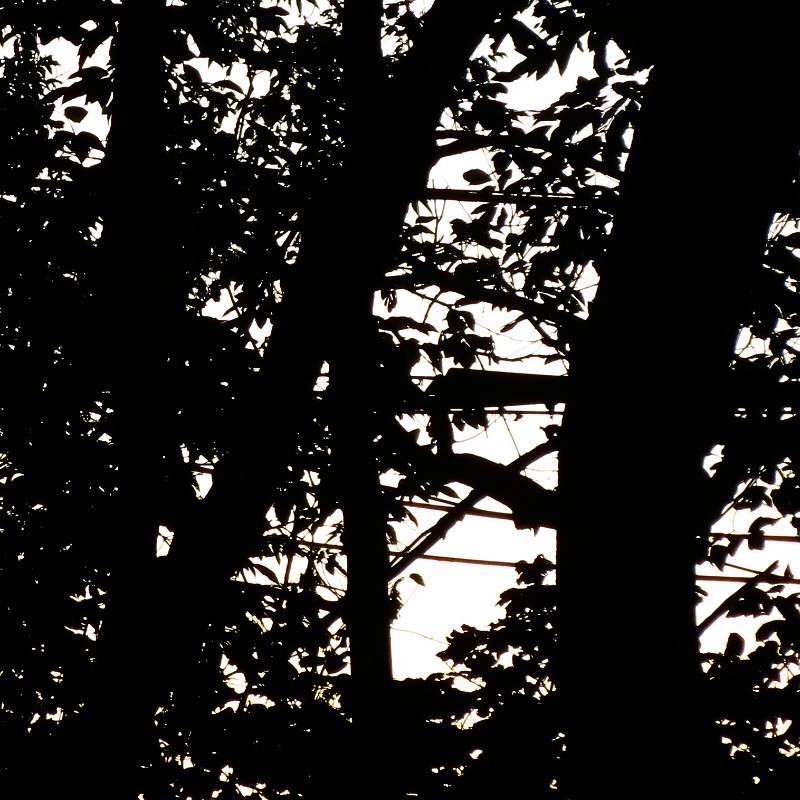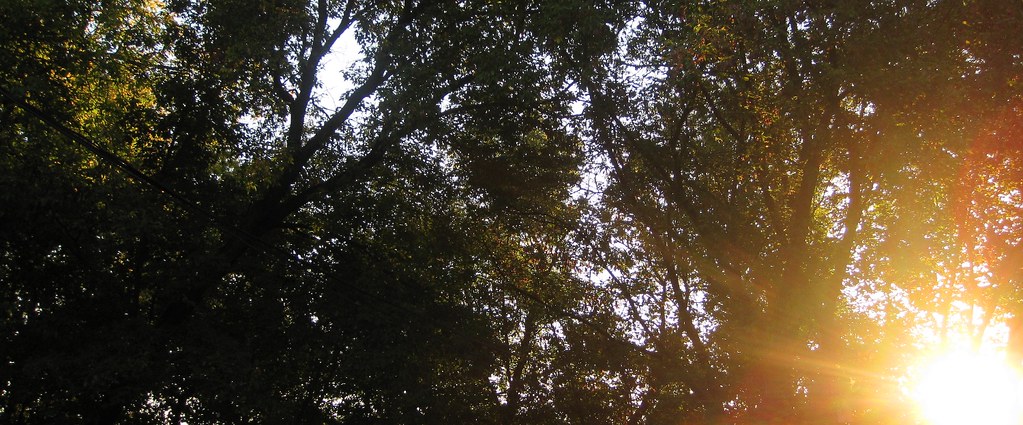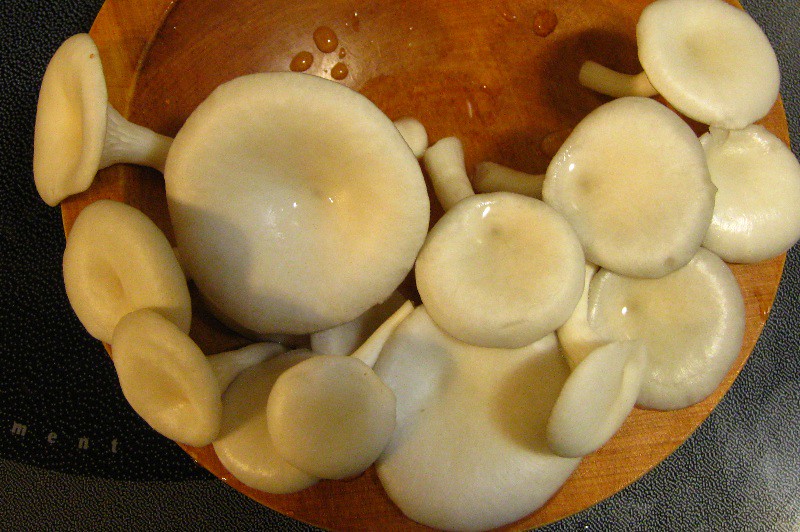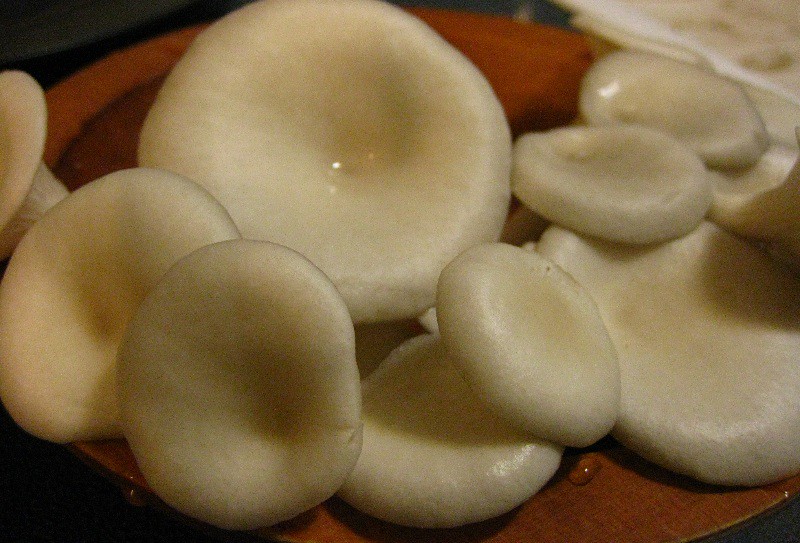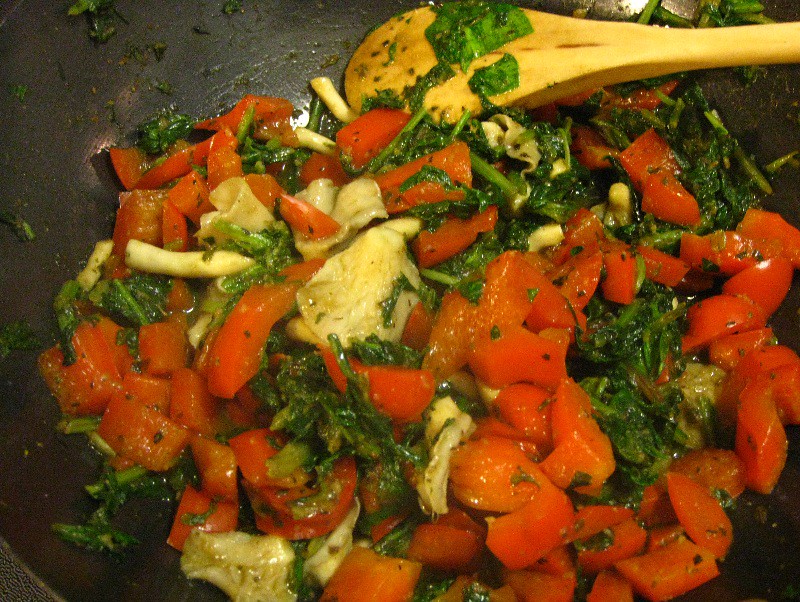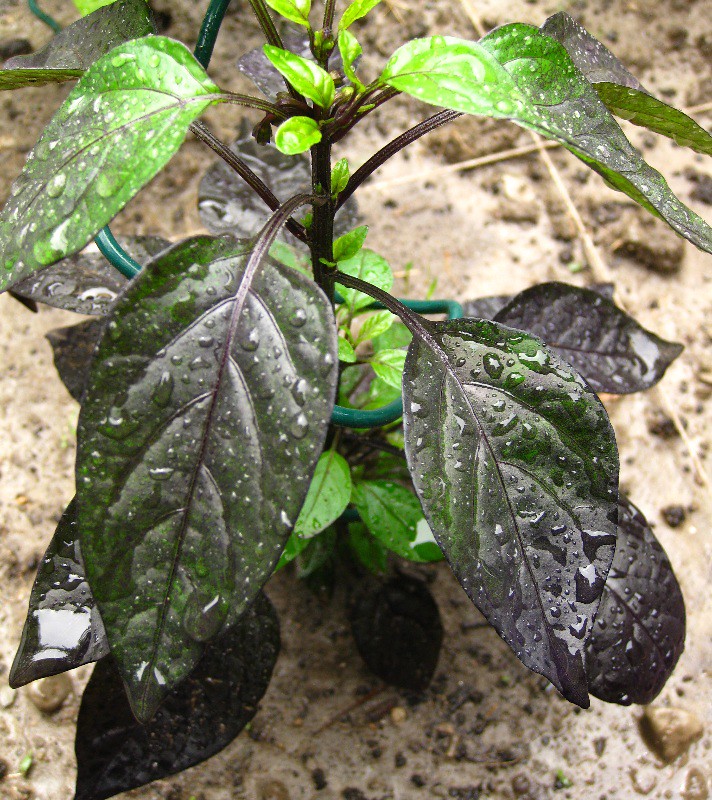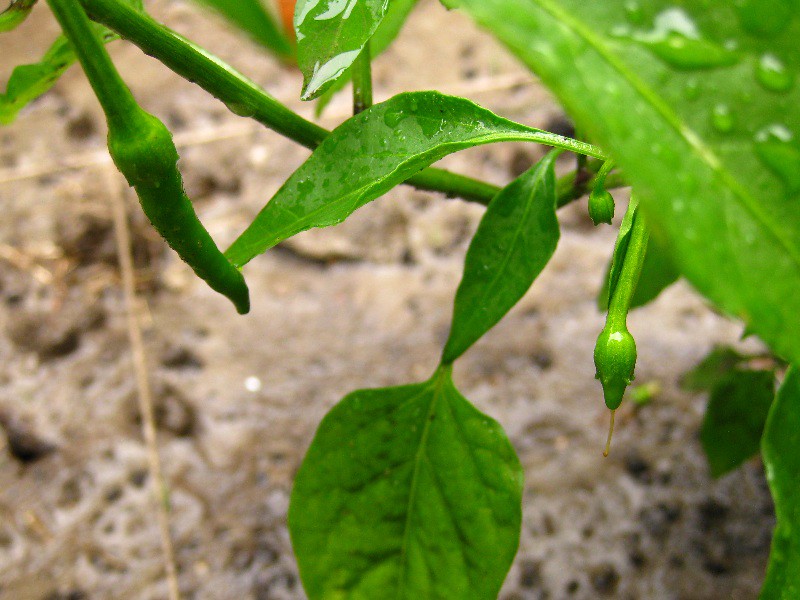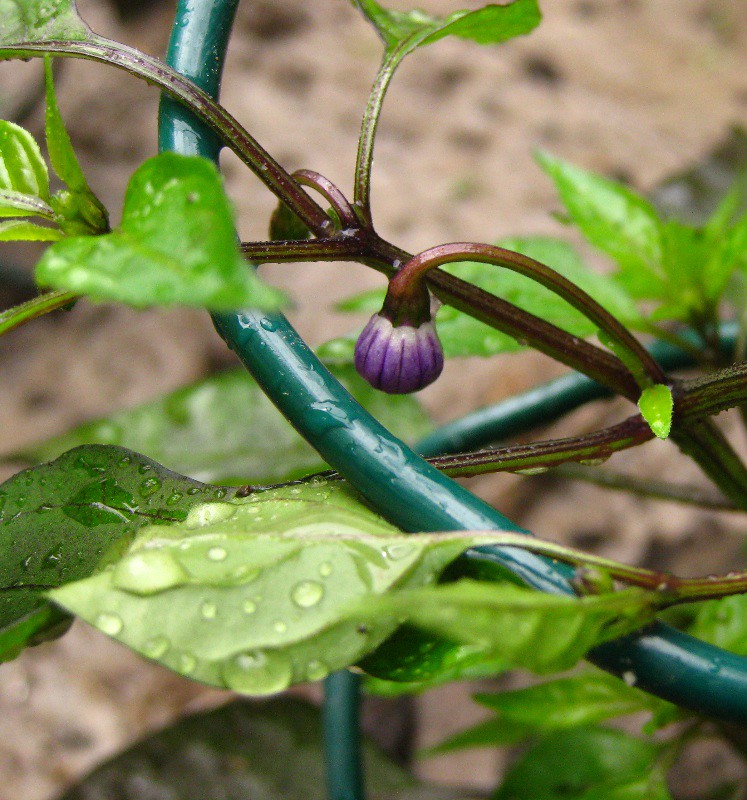Friday, October 7, 2011
Thursday, June 30, 2011
Mushrooms
We did some fiddling with our mushroom fruiting chamber this week.We have a shiitake mushroom block and an oyster mushroom block in there. I'll have to post pictures of the set-up we've got some time. But anyway, the oyster block must have liked what we did, because it's been very productive this week.
I harvested about a dozen mushrooms, 41 grams altogether. There are about a dozen more that I left on the block because they're still on the small side, but they should make a nice side dish later on this week.
I tried a new recipe with these. Well, okay, more of a made-up-as-I-went-along recipe. I combined some shredded spinach (3 cups or so), a diced red bell pepper, some fresh basil and parsley, some garlic, and a couple tablespoons of bread crumbs. I had some radish greens leftover, so I tossed those in too. I sauteed that with a tablespoon of olive oil and two tablespoons of soy sauce for 5 minutes, added the mushrooms, and sauteed for another 2 minutes. I think it turned out fairly well, so it goes in the "I'll make this again" pile.
I harvested about a dozen mushrooms, 41 grams altogether. There are about a dozen more that I left on the block because they're still on the small side, but they should make a nice side dish later on this week.
I tried a new recipe with these. Well, okay, more of a made-up-as-I-went-along recipe. I combined some shredded spinach (3 cups or so), a diced red bell pepper, some fresh basil and parsley, some garlic, and a couple tablespoons of bread crumbs. I had some radish greens leftover, so I tossed those in too. I sauteed that with a tablespoon of olive oil and two tablespoons of soy sauce for 5 minutes, added the mushrooms, and sauteed for another 2 minutes. I think it turned out fairly well, so it goes in the "I'll make this again" pile.
Friday, June 24, 2011
Pepper Patch
This year, I’m growing no fewer than nineteen different types of peppers. I’m not even entirely sure how that happened. One day, I’m looking through seed websites, amazed at the variety of seeds I’d never even heard of before. The next, I’m making a list of the seeds I ordered from different places, and it occurs to me that maybe I should count how many I’ve bought. Nineteen pepper varieties.
Hot Peppers:
Ancho Poblano: Originally from Mexico. The peppers start off purplish-green and mature to near-black. 1,000 to 2,000 scoville units.
Black Pearl: A fairly new pepper, with fruit that starts off black and changes to bright red. I’m not sure of the scoville rating, but one website recommended “do not eat the peppers unless licensed to swallow fire.” I love spicy food, so for better or worse, I will definitely try eating these.
Leaves on the Black Pearl plant begin bright green, and then darken to black as they age
Cayenne Chile: 35,000 to 55,000 scoville; I’ll use it for salsa and maybe making my own cayenne seasoning.
First peppers to begin forming in my garden this year: cayenne
Chinese Five Colour: 30,000 to 50,000 scoville units. The peppers progress from purple to cream, yellow, orange, and finally red.
Jalapeno: 3,500 to 5,000 scoville units. I plan on pickling quite a few of these.
Nosegay: The smallest pepper I’m growing. It should reach about 12-15 cm at maturity. The peppers are small and round. It’s described as having “medium heat”, but I haven’t been able to find a scoville rating for it.
Nosegay pepper - a mere 5 cm tall, and already blooming
NuMex Twilight: Any pepper with “NuMex” in the name was created by New Mexico State Universiy. This one was developed in 1992. The peppers change from purple to lavender, yellow, orange and finally red. Scoville rating is about 50,000.
Pretty Purple: 4,000 to 8,000 scoville units. The peppers are dark purple at first, and mature to a bright red.
'Pretty Purple' pepper bud
Purple Jalapeno: Supposedly a bit spicier than normal jalapeno peppers, with a rating of 6,000 scoville units. The peppers begin green, then turn purple and finally red.
Serrano Chile: 10,000 to 20,000 scoville units. I'm mainly growing these for making salsa.
Tabasco Chile: 30,000 to 50,000 scoville units. Originally cultivated near Tabasco, Mexico.
Sweet Peppers:
Bull’s Horn of Carmagnola: This is a rare seed I purchased from “Richter’sSeed Zoo.” It’s a fairly large, horn-shaped red pepper, grown in the Carmagnola district of northern Italy. I’m hoping to save seed this year and maybe trade with it next year.
Keystone Giant: The peppers stay green for a long time, and are often used in their green stage. Eventually they turn red.
King of the North: A variety introduced in New York in 1934. Ripens to red.
Mini Red Bell: The plant is compact and grows about 30 cm tall. The peppers are 3 to 3.5 cm.
Orange Bell: As the name implies, it ripens to orange. It seems to be growing fairly compactly so far.
Purple Beauty: This one was apparently developed through the dehybridization of a purple hybrid bell pepper.
Quadrato d’Astia Giallo: Peppers ripen from green to yellow. This one’s an Italian heirloom.
Tangerine Pepper: The plant grows about 40 cm high, with 5 to 6 cm peppers. I couldn’t resist the name. The peppers are orange when ripe.
Clockwise from top left: Ancho Poblano, Black Pearl, Keystone Giant, Orange Bell, Jalapeno, NuMex Twilight
I apologize for not having any pictures of the ripe peppers. I want any pictures I post on this blog to be ones I've taken myself, and since I've never grown any of these peppers before, that means I'll have to wait until they set fruit and ripen before I can post pictures.
If you look closely, you'll see the peppers have green spirals around them.
Purple Jalapeno pepper with spiral stake
They're actually pieces of chain-link fencing, cut down to size and bent into a spiral shape. I got the idea from flipping through a couple gardening catalogs advertising 'spiral garden stakes.' I happened to have a roll of fencing that I got for free from Craigslist, so I made my own. Granted, they probably aren't as strong as the ones you can buy from a garden supplier, but they seem to be doing the trick so far. And I can always double-up on the spirals if I need to, later on.
Subscribe to:
Posts (Atom)

